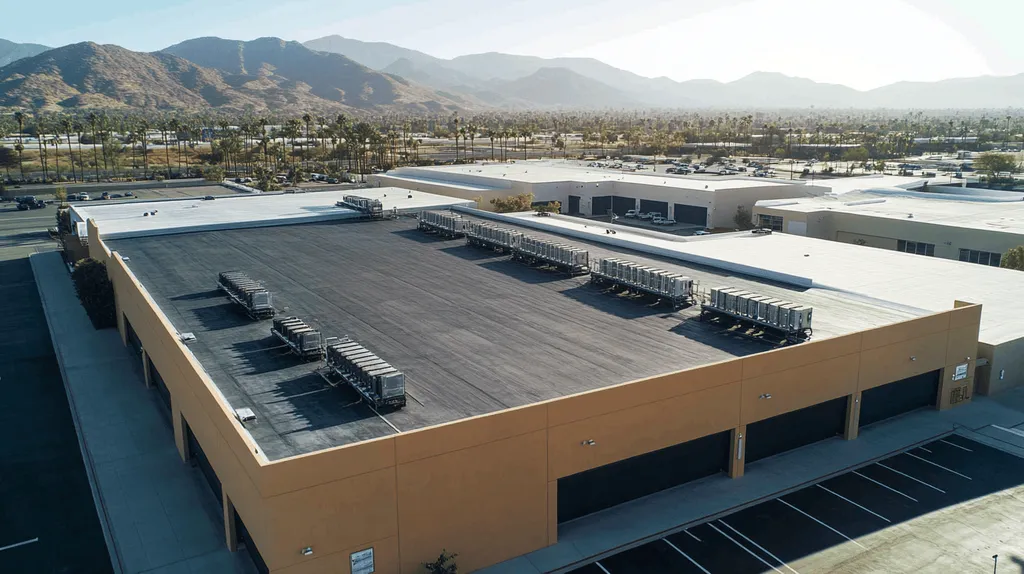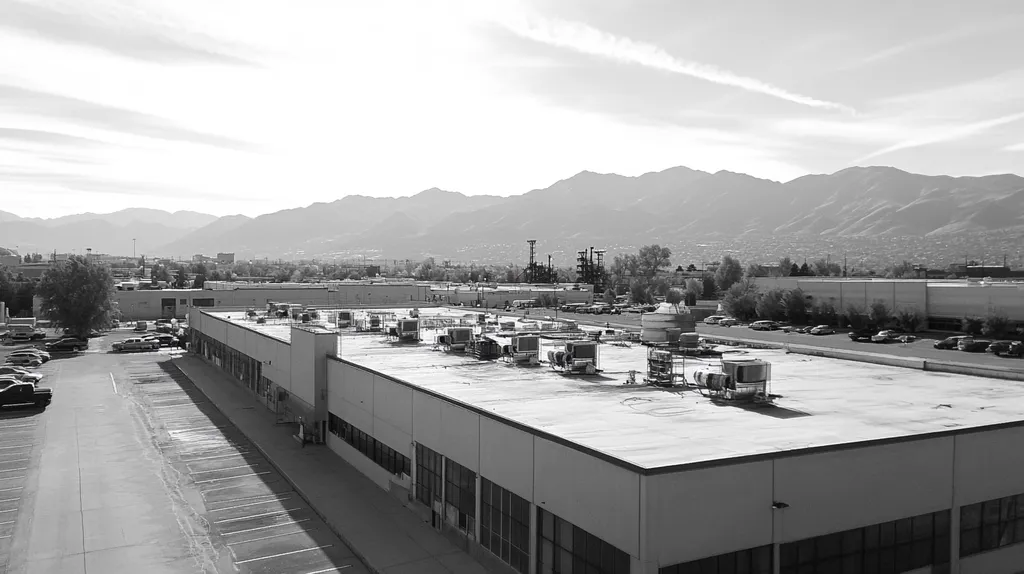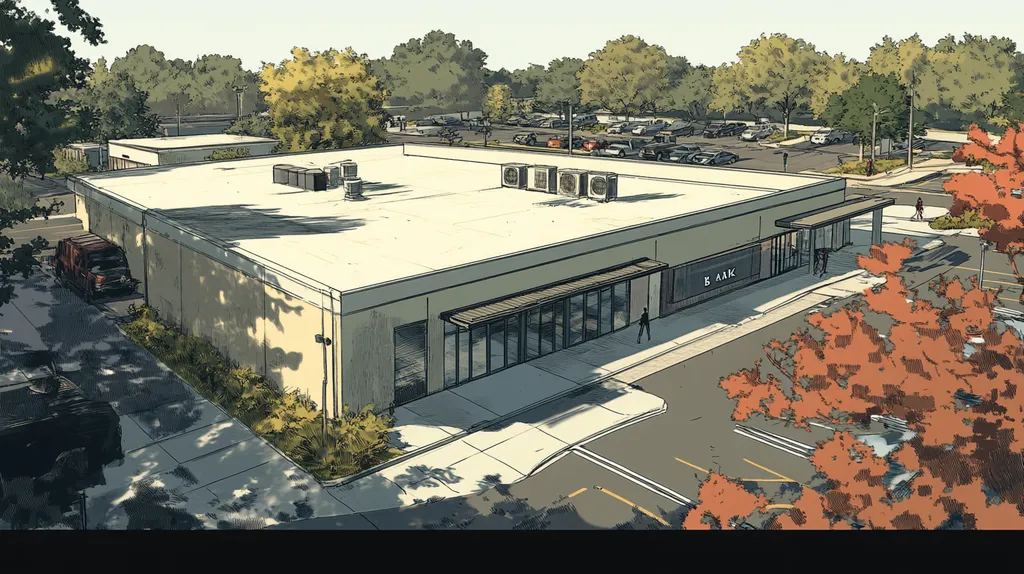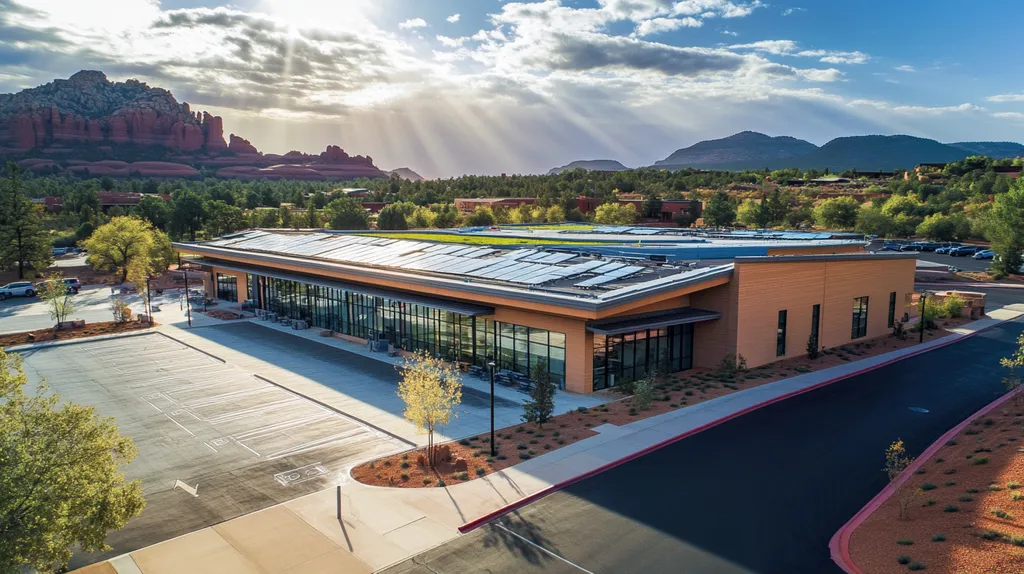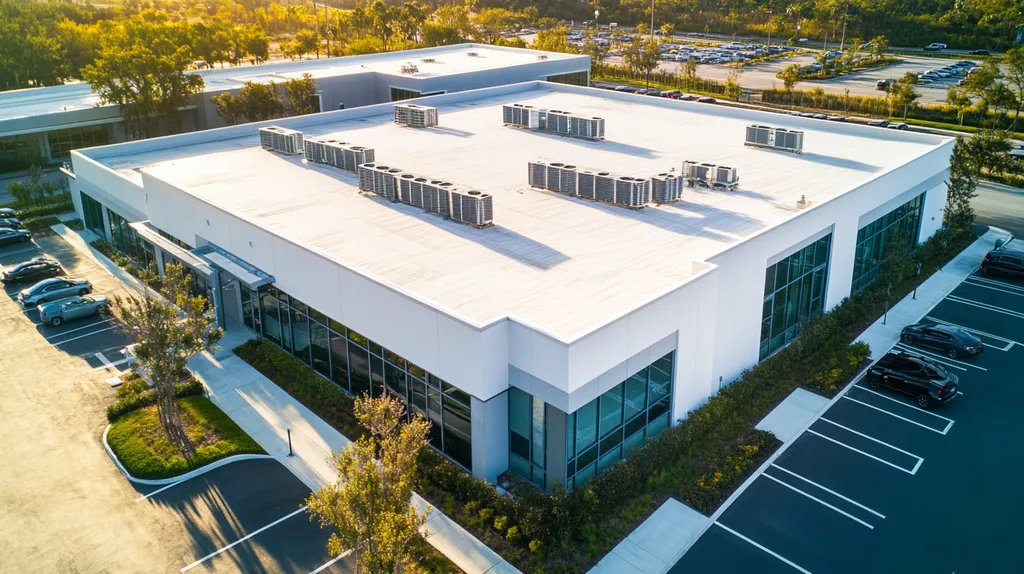Each year, commercial property owners lose millions due to preventable roof damage caused by inadequate seasonal maintenance. Industry studies show that up to 85% of roof failures could be avoided through proper inspection timing.
As weather patterns become increasingly unpredictable, understanding when and how to inspect commercial roofs becomes critical for protecting these valuable assets. The cost of emergency repairs often exceeds planned maintenance by 300%.
This comprehensive guide examines the crucial relationship between seasonal changes and roof inspections, providing property managers with actionable strategies for maintaining roof integrity throughout the year.
SECTION 1: FUNDAMENTAL CONCEPTS
Regular inspections of commercial roofs are not just a box to check; they are crucial for preserving the integrity of the building and avoiding expensive repairs. Studies reveal that 30% of roofing failures stem from insufficient maintenance and lack of inspection schedules. As seasons shift, the demands placed on roofing materials change, making it essential for property owners and facility managers to schedule timely evaluations. In this section, we will delve into why seasonal inspections matter, the different types of inspections available, and the benefits of embracing proactive maintenance.
Importance of Seasonal Inspections
Seasonal inspections play a critical role in detecting potential issues before they worsen. For example, winter weather can result in ice dams and snow buildup, putting pressure on roofing systems. Regular inspections can help anticipate these conditions, allowing for proactive measures that prevent leaks and structural damage.
Moreover, transitioning from wet to dry seasons often reveals weaknesses in roof membranes and flashing. Left uninspected, small cracks can develop into serious problems like water infiltration. Early intervention is essential for extending the life of a roof.
Each season introduces distinct weather challenges, from heavy rain in spring to intense UV exposure in summer. Awareness of these factors equips roofers to suggest customized maintenance plans. Seasonal inspections are key to ensuring roofs can endure the changing climate, safeguarding the investment in a commercial property.
Types of Commercial Roof Inspections
Commercial roof inspections generally fall into three categories: visual, infrared, and comprehensive assessments. Visual inspections entail a straightforward examination for visible signs of damage, such as punctures or water pooling. These inspections are crucial for ongoing maintenance management.
Infrared inspections utilize thermal imaging to detect hidden moisture trapped within the roofing assembly. This technique is especially beneficial for flat roofs, where water can accumulate unnoticed. By identifying potential leaks early, these inspections help mitigate further damage.
Comprehensive assessments take thoroughness a step further, incorporating structural evaluations and moisture scanning. These assessments often require specialized tools and expert knowledge, making them invaluable at least once a year or following significant weather events. Utilizing a variety of inspection types provides a complete picture of a roof’s condition.
Benefits of Proactive Maintenance
Embracing proactive maintenance comes with numerous advantages, primarily reducing the likelihood of unexpected repairs. Regular inspections can identify small issues that are simple to fix, thus avoiding costly reconstruction later. A minor tear in a membrane, if left unchecked, can lead to significant leaks.
A well-maintained roof also improves energy efficiency, resulting in lower heating and cooling expenses. An effective roof reflects sunlight and minimizes thermal transfer, significantly impacting overall energy costs for a facility. Property owners can enjoy substantial long-term savings.
In addition, implementing a proactive maintenance plan boosts the overall value of a building. A well-cared-for roof instills confidence in potential buyers or tenants, making properties more appealing in a competitive market. This strategic approach to roofing management not only protects investments but also ensures smoother, long-lasting operations.
SECTION 2: SYSTEM COMPONENTS
Understanding the essential components of a commercial roof is crucial for maximizing its lifespan. Weather changes can put intense pressure on roofing materials, increasing the likelihood of damage if not addressed promptly. By scheduling regular inspections, property owners can catch potential problems early, sparing themselves from hefty repair bills down the line. This section outlines key roofing materials, the importance of structural integrity, and effective moisture detection methods, serving as a guide for informed decision-making.
Roofing Materials and Durability
The choice of roofing materials significantly impacts how well a commercial roof performs over its lifetime. Options like TPO, EPDM, and PVC are designed to withstand UV radiation and harsh weather. For instance, buildings in snowy areas need a strong membrane that can handle the weight of snow without sagging or collapsing.
Each material has its own maintenance needs. Metal roofs, for example, may need periodic coatings to fight rust, while single-ply membranes require careful seam inspections to avert leaks. Understanding these differences allows facility managers to sync maintenance schedules with material-specific vulnerabilities.
Moreover, advancements in roofing technology are constantly evolving, introducing options that enhance durability. Certain coatings now can reflect sunlight, aiding in both energy efficiency and extending the life of the roofing material. Staying updated on these innovations enables property owners to make smarter choices.
Ultimately, the right materials, coupled with regular inspections, ensure roofs can withstand seasonal changes and effectively protect what’s underneath.
Structural Components and Integrity
Just as roofing materials matter, so too does the structural integrity of the roof itself. Components like trusses, decking, and insulation must receive regular checks to confirm they’re supporting the roofing system as intended. Seasonal fluctuations in temperature can cause materials to expand and contract, leading to potential issues.
For instance, inadequate insulation can encourage ice dams during winter, adding pressure to structural elements. Inspections should be attentive to signs of wear that could compromise the roof’s performance. Ignoring these issues risks severe structural failures that could cost property owners more in the long run.
Additionally, any signs of sagging or shifting in the roof structure should be regarded as urgent. This is especially true for older buildings, where signs of wear may be subtle. Proactive maintenance not only protects against immediate issues but also enhances long-term roof functionality.
Maintaining structural components prevents unexpected costs associated with major repairs down the line. A thorough understanding of a roof’s structural health enables timely interventions that boost overall performance.
Moisture Intrusion Detection Methods
Moisture intrusion is a significant threat to the longevity of commercial roofs, as it can lead to mold growth and structural compromise. For this reason, effective detection methods are essential for early intervention. Technologies like infrared thermography and moisture meters provide non-invasive ways to locate trapped moisture.
Infrared thermography identifies temperature variations that may indicate moisture issues, particularly in hard-to-see areas. Regularly using this technology during inspections can reveal potential problems before they escalate, extending the roof’s life and improving the integrity of the entire building.
In addition to technological methods, conducting physical inspections remains a vital practice. Checking for standing water and inspecting seams can uncover issues that technology might not fully reveal. Combining both approaches yields a complete picture of moisture risks.
A robust moisture detection strategy is indispensable. Property owners who emphasize this aspect can mitigate extensive damage and prolong their roofs’ lifespan, ultimately safeguarding their investments.
SECTION 3: IMPLEMENTATION METHODS
Seasonal changes can have a significant impact on the health of commercial roofing systems, making timely inspections more crucial than ever. Research indicates that up to 30% of roof damage can occur as seasons shift, particularly during harsh winters and stormy summers. By adopting a strategic inspection schedule, property owners can reduce risks and extend the life of their roofs. This section will outline practical approaches to implementing efficient inspection routines, focusing on seasonal scheduling, post-weather event inspections, and the integration of advanced inspection technologies.
Scheduling Inspections by Season
Each season presents unique challenges for commercial roofs, necessitating tailored inspection strategies. In winter, inspections should spot ice dam formations that might lead to leaks. Spring is the perfect time to clear debris and ensure drainage systems are ready to handle the rain. Summer inspections focus on identifying heat-related wear, while fall inspections help prepare roofs for the winter ahead.
Creating a seasonal calendar is an effective way for property managers to organize inspections aligned with local climate conditions. For example, in regions prone to heavy snowfall, conducting early winter inspections can proactively address ice buildup and prevent associated damages. Consistent scheduling helps mitigate the risks of unexpected weather-related issues.
Incorporating weather forecasts into inspection planning can further enhance effectiveness. Anticipating a significant storm allows for preemptive inspections to uncover vulnerabilities that may be exacerbated by impending weather events. This thoughtful approach to scheduling positions property managers for success in maintaining roof integrity.
Lastly, collaboration with roofing professionals when establishing this inspection calendar is crucial. Their expertise can lead to insights tailored to specific roof types and geographic locations, ensuring a rounded and proactive inspection strategy. The results of a well-structured inspection schedule manifest in improved longevity and performance of the roofing system.
Post-Weather Event Inspection Protocols
Severe weather events can instantly jeopardize the integrity of roofs, necessitating immediate assessment following storms, heavy rains, or hail. Implementing a post-event inspection protocol enables property managers to catch potential damage early and mitigate long-term issues, such as leaking and structural compromise.
Establishing clear inspection procedures after adverse weather is essential. For example, high winds may have loosened roof membranes, while hail can create punctures. A prompt response to these concerns can significantly lessen the risk of internal damage, which can lead to escalated repair costs.
Documenting each roof’s condition after significant weather events builds a vital historical record. Thorough reports detailing damage can aid in understanding how varying weather conditions have influenced roof performance over time, guiding more informed future maintenance decisions and replacement strategies.
Engaging qualified roofing professionals for these assessments is also important. Their expertise in detecting subtle yet serious damage can prove invaluable. Prioritizing timely inspections after weather events not only safeguards the investment but also enhances safety for everyone in the building.
Using Advanced Inspection Technologies
Incorporating advanced technologies into roofing inspections is becoming increasingly essential as facility management evolves. Tools like drones and infrared scanners provide deep insights into roof conditions, allowing for swift and accurate assessments without extensive physical labor.
Drones equipped with high-resolution cameras can conduct thorough surveys of large roof areas quickly, capturing images that highlight potential vulnerabilities. This technology is particularly beneficial for assessing complex roofing systems where traditional inspections might prove cumbersome. Using drones can significantly reduce both inspection time and costs.
Infrared scanning is another crucial technology, identifying heat leaks and moisture intrusion in ways that are invisible to the naked eye. This capability empowers property managers to make informed decisions about necessary repairs and maintenance, enhancing operational efficiency.
Investing in these cutting-edge technologies not only streamlines the inspection process but also fosters a more proactive approach to roof maintenance. By embracing innovation, facility managers can respond more effectively to roofing issues, ensuring their assets are well protected against seasonal challenges.
SECTION 4: MAINTENANCE REQUIREMENTS
Neglecting regular maintenance on commercial roofs can set the stage for costly damage and serious structural concerns. Studies show that routine inspections can cut repair costs by as much as 70%. Property owners and facility managers must prioritize these scheduled checks to tackle wear and tear before seasonal changes make issues worse. This section highlights the importance of establishing routine inspection frequencies, recognizing visible signs of wear, and carrying out pre-purchase and post-weather inspections.
Routine Inspection Frequency
Consistency in inspection is key to maximizing the lifespan and performance of commercial roofs. Experts recommend conducting inspections twice a year, ideally in the spring and fall, to get ahead of weather-related wear and damage. These scheduled checks allow property managers to catch potential problems before they escalate into costly repairs.
It’s also vital to conduct immediate inspections after significant storms. Heavy rains, hail, or strong winds can cause hidden damage, resulting in leaks or structural weaknesses. Prompt assessments can prevent these minor concerns from ballooning into larger issues, ultimately saving money and resources.
Facilities managers should incorporate these routine inspections into their yearly maintenance plans. Keeping a detailed record of findings and actions taken during each inspection enhances accountability and aids in formulating a long-term maintenance strategy.
Investing in professional roofing services for these inspections guarantees thoroughness. Experienced inspectors can identify nuanced issues that untrained personnel might miss, such as membrane deterioration or flashing problems.
Addressing Visible Signs of Wear
Visible wear and tear, such as cracking, blistering, or ponding water, must be addressed swiftly to avoid major roofing failures. Ignoring these signs can escalate repair costs significantly. Proactive maintenance mitigates these risks and keeps expenses manageable.
For instance, cracking and blistering typically signal that roofing materials are deteriorating. Addressing these issues early allows for targeted repairs, rather than the need for costly full replacements down the line. Regular maintenance can effectively tackle these common wear patterns.
Ponding water represents another pressing challenge; it often indicates drainage problems that can worsen during heavy rainfall. Routine inspections can spot these trouble areas, ensuring that all drainage systems operate effectively.
Documenting visible wear and repair efforts creates a comprehensive history of the roof’s condition. This record becomes invaluable when planning future maintenance or seeking budgetary approvals for larger projects.
Pre-Purchase and Post-Weather Inspections
Pre-purchase inspections are crucial for evaluating a roof’s condition before acquiring a property. A clear understanding of roof integrity allows buyers to negotiate price adjustments or repair estimates. Potential buyers should prioritize these inspections to avoid unwelcome surprises down the road.
Similarly, post-weather inspections play a vital role, particularly after severe storms. Assessing the roof condition post-event reveals damage that may not be immediately visible, helping to prevent larger, more costly repairs in the future.
Both pre-purchase and post-weather inspections guide informed decision-making regarding maintenance budgets and repair prioritization. They also provide peace of mind, reassuring property owners that their roofs remain structurally sound.
Engaging professionals during these critical evaluations can highlight areas needing immediate attention or long-term maintenance planning. This strategic approach is essential for effective roof management.
SECTION 5: PERFORMANCE METRICS
Monitoring the performance metrics of a commercial roof is critical for its longevity and to avoid the pitfalls of unexpected damages. With seasonal changes causing wear and tear, it becomes imperative to evaluate the roof’s condition regularly. Alarmingly, studies show that 70% of roofing failures are linked to inadequate maintenance. By understanding key performance metrics, property owners can proactively manage risks and extend the lifespan of their roofs.
Evaluating Roof Condition and Health
Regularly assessing the overall health of a commercial roof is vital for keeping it functional and secure. Inspections can help identify surface wear, moisture intrusion, and issues related to membrane integrity. For example, a straightforward visual inspection after severe weather can catch cracks or blisters that could worsen over time.
Utilizing roofing technologies like infrared scanning and moisture meters can offer insights into hidden problems. These advanced tools help property managers pinpoint issues before they lead to costly leaks. Timely evaluations keep everyone informed and prepared for necessary repairs.
Additionally, implementing a standardized method for evaluations ensures consistent data collection. This data tracking creates a clearer picture of the roof’s changing condition over time, which significantly enhances decision-making. Without these assessments, deterioration can go unnoticed until it becomes a serious issue.
In the end, maintaining roof health translates to significant savings and improved building performance. Scheduling regular evaluations, particularly aligned with seasonal changes, can make a considerable difference in the effectiveness of maintenance strategies.
Identifying Potential Leak Sources
Leaks pose one of the most significant threats to commercial roofs. Identifying potential leak sources is essential for maintaining roof performance over time. Common culprits include poorly sealed seams, punctures, and drainage issues, each influenced by seasonal changes.
For instance, during winter, ice dams can trap water and lead to leaks that may not be apparent until spring thaw. Therefore, property managers need to conduct proactive checks, especially following severe weather. Regular inspections can reveal vulnerabilities before they develop into leaks.
Incorporating moisture detection tools during inspections can help uncover hidden leaks that might cause severe damage if left unaddressed. Early identification of these issues allows for timely interventions, significantly cutting down on repair costs.
By adopting a systematic approach to identifying potential leak sources, property owners can foster a culture of proactive maintenance. This knowledge equips them to take preventive actions, safeguarding their investments and assets.
Assessing Insulation and Ventilation
Proper insulation and ventilation play critical roles in enhancing the performance of commercial roofs. Inadequate insulation can lead to significant heat loss or gain, stressing roofing materials over time. Meanwhile, poor ventilation can foster condensation, contributing to mold growth and even compromising roofing structures.
Seasonal assessments of insulation, especially during extreme temperature changes, are vital for detecting gaps that might undermine energy efficiency. For example, roofs with insufficient insulation can drive up energy costs during cold winters and sweltering summers.
In addition, evaluating ventilation systems is equally essential. Proper airflow regulates roofing temperature and moisture levels. Regular checks on vents and exhausts can ensure optimal functioning, preventing material degradation due to unhealthy buildup.
Ultimately, a robust strategy for assessing insulation and ventilation is essential for extending a roof’s lifespan. Overlooking these critical components can lead to serious issues affecting both energy efficiency and the roof’s structural integrity.
SECTION 5: PERFORMANCE METRICS
Monitoring the performance metrics of a commercial roof is crucial for ensuring its longevity and avoiding expensive repairs. With seasonal changes causing additional wear and tear, it becomes essential to routinely evaluate the roof’s condition. Alarmingly, studies indicate that 70% of roofing failures are attributed to inadequate maintenance. By understanding key performance metrics, property owners can proactively manage risks and significantly extend roof lifespan.
Evaluating Roof Condition and Health
Regularly assessing the overall health of a commercial roof is fundamental for ensuring it remains functional. Inspections can help identify surface wear, moisture intrusion, and issues related to membrane integrity. For instance, a simple visual check following severe weather can uncover cracks or blisters that may worsen over time.
Property owners should consider utilizing advanced roofing technologies, such as infrared scanning and moisture meters. These tools can reveal hidden problems and prevent larger, costly leaks later on. Staying ahead of potential issues through timely evaluations keeps property managers informed and ready for necessary repairs.
Furthermore, implementing a standardized evaluation process ensures consistent data collection. This systematic approach enables tracking of changes in the roof’s condition over time, enhancing decision-making. Without regular assessments, deterioration can quietly escalate until it becomes a serious problem.
Ultimately, maintaining roof health results in long-term savings and improved building performance. Scheduling regular evaluations, particularly with the changing seasons in mind, can greatly enhance the effectiveness of maintenance strategies.
Identifying Potential Leak Sources
Leaks stand out as one of the most damaging issues for commercial roofs. Identifying potential leak sources is essential for maintaining roof performance over the years. Common culprits include poorly sealed seams, punctures, and drainage issues that can change with the seasons.
For example, during winter, ice dams can lead to water backup, causing leaks that may not become apparent until the spring thaw. This is why property managers need to conduct proactive checks, especially after severe weather events. Regular inspections can help identify vulnerabilities before they escalate into leaks.
Moreover, employing moisture detection tools during scheduled inspections can uncover hidden leaks that might cause severe damage if left unaddressed. Identifying these issues early allows for timely repairs, significantly lowering overall repair expenses.
Committing to a systematic approach for spotting potential leak sources fosters a culture of proactive maintenance. This knowledge empowers property owners to take preventive measures, safeguarding their investments and assets.
Assessing Insulation and Ventilation
Effective insulation and ventilation are critical for enhancing the performance of commercial roofs. Insufficient insulation can lead to excessive heat gain or loss, stressing roofing materials over time. Additionally, inadequate ventilation can promote condensation, leading to mold growth and compromising roofing structures.
Conducting seasonal assessments of insulation, especially during periods of extreme temperature fluctuations, is vital for detecting gaps that could undermine energy efficiency. For instance, roofs lacking adequate insulation might incur higher energy costs during both cold winters and hot summers.
Equally important is the evaluation of ventilation systems. Proper airflow helps regulate both temperature and moisture levels within the roofing structure. Regular checks on vents and exhausts can ensure proper functioning, preventing buildup that could degrade roofing material.
In summary, having a robust strategy for assessing insulation and ventilation is essential for maximizing the roof’s lifespan. Overlooking these components can lead to serious consequences that affect energy efficiency and the overall integrity of the roof.
The Bottom Line
With commercial roof failures costing businesses over $2.5 billion annually in repairs and lost productivity, implementing seasonal inspection schedules is no longer optional—it’s essential for survival.
Research demonstrates that properties following structured seasonal inspection programs experience 70% fewer emergency repairs and extend their roof lifespans by up to 40%.
The changing climate brings increasingly unpredictable weather patterns, making proactive maintenance more critical than ever for protecting these valuable assets.
By adopting the seasonal inspection strategies outlined in this guide, property owners and facility managers can significantly reduce risks, control costs, and ensure their roofing systems perform optimally year-round.
The choice is clear: invest in prevention now, or pay substantially more for emergency repairs later.
FREQUENTLY ASKED QUESTIONS
Q. Why are inspections important for my commercial roof?
A. Inspections are vital for spotting issues before they escalate into costly repairs. Regular evaluations help maintain your roof’s integrity by identifying small problems early, ultimately extending its lifespan. Seasonal inspections specifically address challenges posed by weather changes, safeguarding your facility against leaks and damage.
Q. What are the essential components of a commercial roof?
A. Key components include roofing materials, structural integrity, and effective moisture detection methods. Understanding these elements helps identify vulnerabilities early. Seasonal changes can stress these components, making regular inspections necessary for sustained performance and protection against the elements.
Q. When should I schedule inspections for my industrial roof?
A. Inspections should be scheduled according to seasonal changes. In winter, focus on ice and snow; in spring, check drainage systems; during summer, identify heat-related wear; and in fall, prepare for colder months. A seasonal calendar helps ensure timely evaluations and proactive maintenance.
Q. How often should I maintain my commercial roof?
A. Experts recommend conducting maintenance inspections twice a year, ideally in spring and fall. Additionally, immediate inspections after severe weather are crucial for catching hidden damages early. Regular checks keep your roof functioning well and help avoid more significant problems down the line.
Q. What signs indicate my commercial roof needs attention?
A. Signs include cracking, blistering, and standing water. These visible wear patterns indicate underlying issues that need to be addressed. Timely maintenance can prevent minor problems from escalating into significant repairs, thus preserving the roof’s integrity and functionality.
Q. How can I assess insulation and ventilation in my commercial roof?
A. Regular assessments should check for gaps in insulation and evaluate ventilation systems. Proper insulation prevents excessive heat loss or gain, while efficient ventilation helps regulate moisture. Monitoring these elements can greatly impact energy efficiency and the long-term health of your roof.
Q. What advanced technologies can improve roof inspections?
A. Technologies like drones and infrared scanners enhance roof inspections significantly. Drones quickly cover large areas and provide high-resolution images, while infrared scanners detect moisture and heat leaks. Utilizing these tools streamlines the inspection process, making it more efficient and effective.


